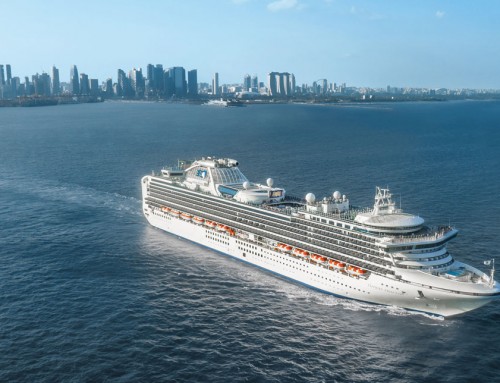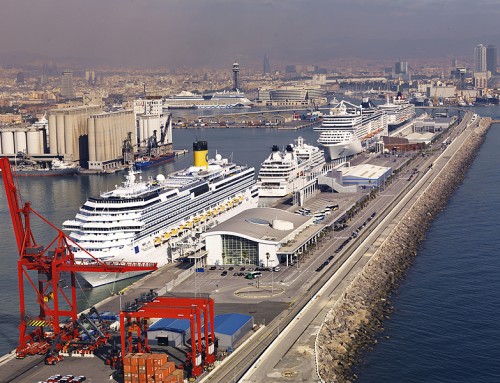 My guidebook to Croatia, from the excellent Bradt series, runs to 392 pages, of which five and a half are devoted to the city of Zadar.
My guidebook to Croatia, from the excellent Bradt series, runs to 392 pages, of which five and a half are devoted to the city of Zadar.
Of the church museum, part of the Benedictine convent attached to the 16th Century St Mary’s Church, it says only that it “houses a wonderful collection of reliquaries, paintings and sculpture.”
That one brief line serves only to disguise the wealth of treasures that greeted the unsuspecting passengers on tour from Voyages to Antiquity’s Aegean Odyssey this morning.
For a start, I don’t think any of us expected to be welcomed by one of the sisters – we didn’t even think they were allowed to speak to visitors.
And when we climbed the plain marble steps to the first floor of the museum, completed only in 1976, the cases of exhibits continued to amaze. Gold and silver caskets from as early as the 11th and 12th Centuries were impressive enough, but then we realised what they claimed to contain.
For these were reliquaries, and inside them are said to be the preserved body parts of saints and bishops. According to the brief descriptions on the glass cases – in English as well as Croatian – shoulder blades, whole arms, even skulls haunt these halls, evidence of the fabulous wealth the city once enjoyed, and perhaps of the gullibility of early church elders.
Could that really be a splinter from the true cross, complete with a fragment of the sponge used at the Crucifixion? Can we believe that one of several golden gauntlets, this one with an erect index finger beckoning, contains the arm of John the Baptist?
But whatever the truth about their supposed contents, there is no denying the splendour of these exhibits, together with icons, altar-pieces and sculptures rescued from several of Zadar’s churches and cathedrals over centuries of war and destruction.
Since its foundation more than 3,000 years ago, on a peninsula jutting into the Adriatic, it has been fought over by the Romans, the Venetians, Turks, Austrians, French and Italians. Much of the old city was destroyed in the Second War, and further damage was done during 1990s when Yugoslavia was torn apart.
Reconstruction continues to this day – a grassy area alongside the Roman forum reopened only a few weeks ago, rescued from the ignominy of being a car park.
Our knowledgeable young guide, Angela, packed a lot into her brief tour as she led us from one cathedral to another, down marble-paved streets and through the vegetable market, packed with fresh salad produce brought from neighbouring smallholdings. And it wasn’t all dusty history.
Who knew, for example, that most relationships in Zadar begin with an assignation outside the shoe shop in the main square – the unpronounceable Narodni Trg? Anywhere else – a narrow alleyway for example – might be too risky for a first date, and if a young lady’s beau were to stand her up, she could always say she was only there to look at the shoes.
After a couple of dates, it’s probably acceptable for the young lovers to take a stroll along the quayside towards where Aegean Odyssey was berthed. With trees on one side, and the sea on the other, this is the venue each year for the Millennium Jump, when – in the name of charity fund-raising – up to 2,000 people leap into the water like a wet Mexican wave.
It is also the location of two remarkable pieces of modern art which are Zadar’s newest treasures
What looks like a set of plain stone steps leading down to the water is actually the Sea Organ, a complex system of hidden pipes and tubes which, powered by waves and tides, produces an incredible and soothing harmony of sound.
Next to it and designed by the same architect, Nikola Basic, a 22-metre diameter circle of 300 glass plates is inset into the paving. Unlike the organ which is constantly playing, this does nothing during the day, except to silently absorb the power of the sun’s rays.
At dusk, it comes alive, a pulsing light show celebrating the sunsets that Zadar is famed for – 50 years ago, Alfred Hitchcock couldn’t tear himself away and stayed for weeks at a local hotel to enjoy what he said were the most beautiful sunsets in the world.
There was no Greetings from the Sun artwork for him to enjoy in the 1960s, but today it adds to the pleasure of those – like us last night – who follow in his footsteps.
We can’t stay, however. At midday, with a blast from the ship’s whistle, Aegean Odyssey slipped away from the quay and headed for Split, where tomorrow we will be exploring Diocletian’s Palace.






Zadar is pretty small and easily walkable. From our appartment is was a mere 10 minute walk to either the beach or the beautiful old town. Climbing the bell tower is great thing to do and climb isn’t difficult and within minutes you’ll have a perfect view over the Zadar old town, surrounding neighbourhoods and island.